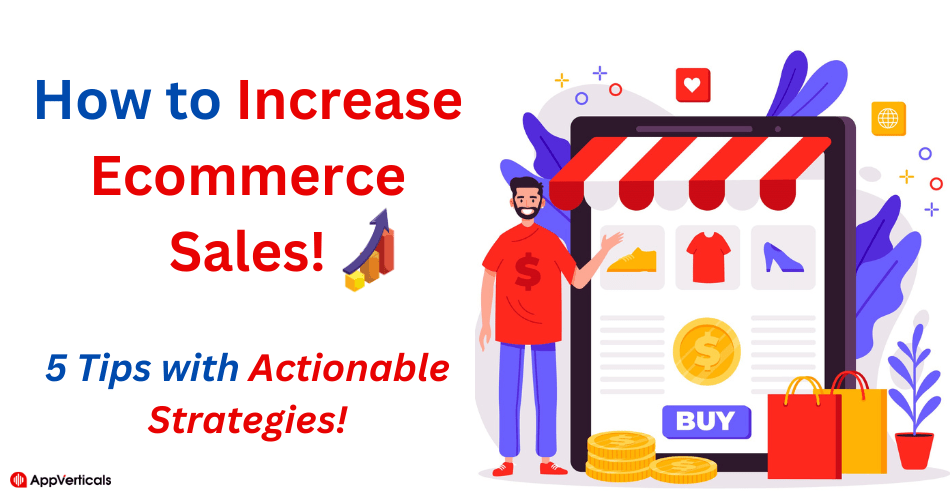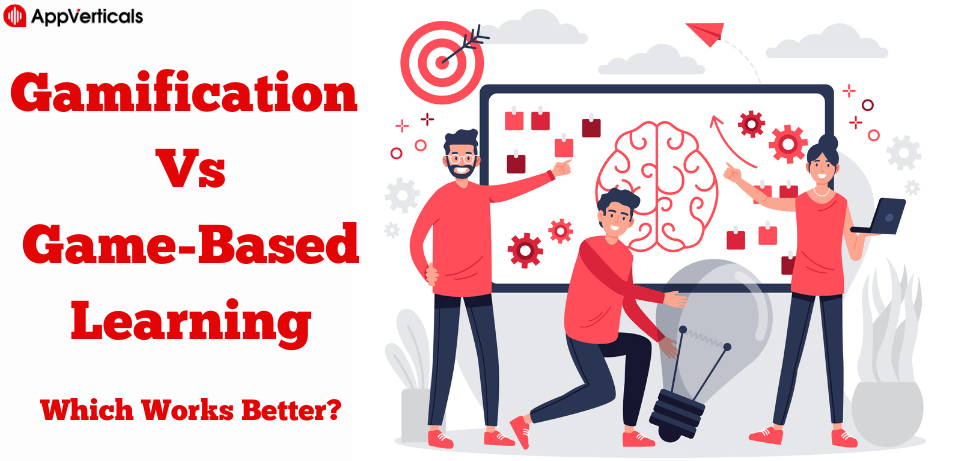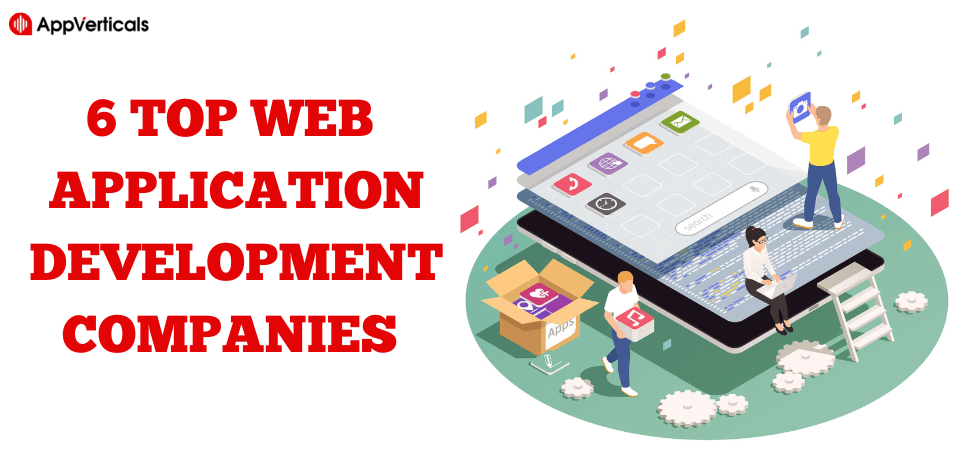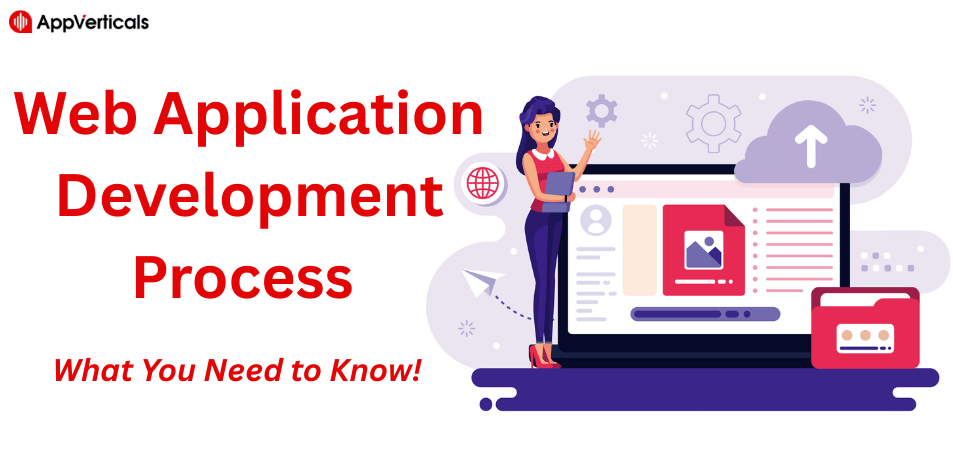Running an ecommerce business is exciting! You get to be your boss, curate amazing products, and connect with customers worldwide. But let’s be honest, staring at stagnant sales figures can be a major buzzkill.
The problem? Growing your online sales can feel like wrestling a greased pig – chaotic and frustrating. But, countless business owners struggle to crack the code: How to increase ecommerce sales?
The good news? This guide is packed with actionable tips and strategies. It’ll help you increase ecommerce sales and turn those window shoppers into loyal fans.
Think of your online store as a magnet, and your ideal customers are the metal filings just waiting to be attracted. The key is to leverage the right strategies to strengthen that magnetic pull and watch your ecommerce sales soar.
So, get ready to transform your online store from crickets to a customer stampede!
1. The Customer Journey: Understanding the Path to Purchase
Ever wonder why some visitors add items to their carts but never complete the purchase? The answer lies in the customer journey. Understanding this journey is crucial for crafting effective marketing strategies that increase your conversion rate (the percentage of visitors who actually buy something) and ultimately increase your ecommerce sales.
Why Map the Customer Journey?
Improving customer experience can increase sales revenue by 2-7% and profitability by 1-2%.
In a traditional store, you can observe customer behavior – how they browse, what catches their eye, and why they might hesitate before buying. In an online store, this can be trickier.
Mapping the customer journey allows you to see the entire picture, understand your target audience’s pain points and desires, and tailor your marketing to each stage.
Here’s how mapping the customer journey helps you understand how to increase ecommerce sales:
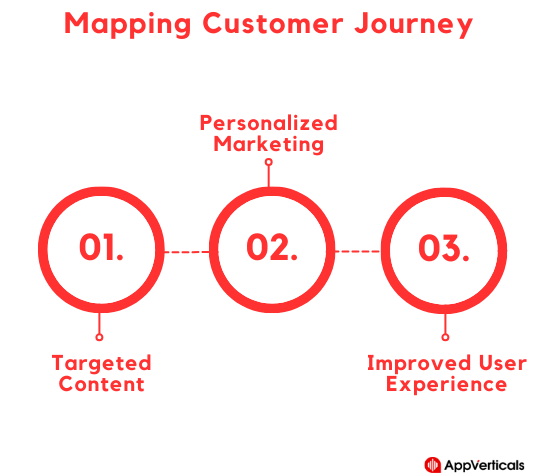
- Targeted Content: By understanding your audience’s needs at each stage, you can create content that resonates with them. For example, someone just discovering your brand might be interested in blog posts about the benefits of your products. Someone closer to purchase might want detailed product descriptions or video tutorials.
- Personalized Marketing: Mapping the customer journey allows you to segment your audience and deliver customized messages. Targeted messaging feels less spammy and leads to higher engagement and increase sales.
- Improved User Experience: Knowing what information customers need at each stage allows you to optimize your website for a smooth buying experience. This means clear product descriptions, high-quality images, and a user-friendly checkout process.
What are the Stages of the Customer Journey?
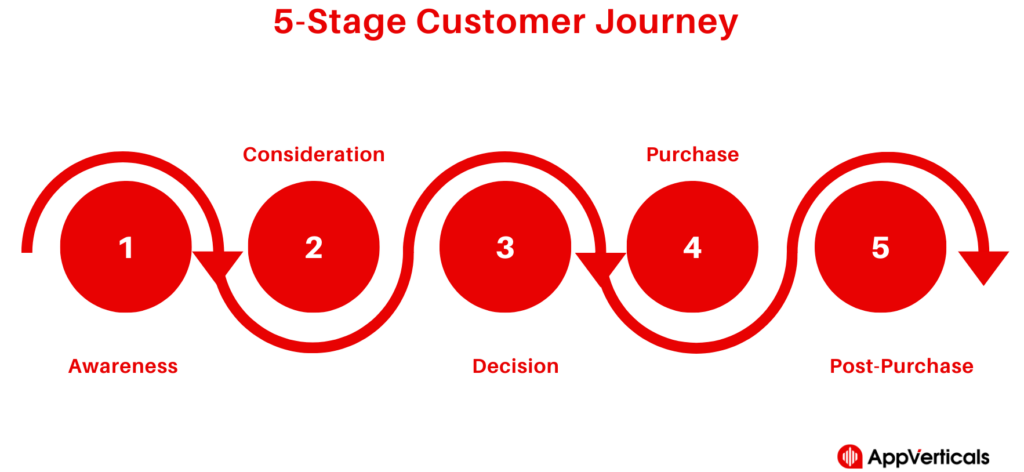
The customer journey typically involves five key stages:
- Awareness: This is where potential customers first become aware of your brand and your products. They might come across your social media ads, see a blog post you wrote, or hear about you from a friend.
- Consideration: Now they’re familiar with your brand and are interested in learning more. They’ll likely visit your website, read product descriptions, and compare your offerings to competitors.
- Decision: The potential customer is seriously considering buying your product. This is where factors like price, product reviews, and shipping options come into play.
- Purchase: They’ve decided to buy! This stage involves a seamless checkout process, clear communication about order confirmation and shipping, and building trust. More than 70% of customers believe they are eager to spend more money when a company delivers excellent customer service, therefore doing so can help you increase ecommerce sales with your current customer base.
- Post-Purchase: McKinsey reports that customers in top-performing loyalty programs spend 15% to 25% more yearly when redeeming their points. The post-purchase stage is all about building customer loyalty and encouraging repeat business. This could involve sending personalized emails with recommendations, offering excellent customer service, and running loyalty programs.
How to Identify Your Target Audience at Each Stage?
So, how do you identify your target audience at each stage of the customer journey? Here are some actionable tips:
- Buyer Personas: Create detailed profiles of your ideal customer at each stage. What are their demographics (age, income, location)? What are their needs and pain points? What type of content are they looking for?
- Website Analytics: Tools like Google Analytics can tell you a lot about your website visitors. According to Google, increasing page load time from one to three seconds leads to a 32% rise in customer abandonment rates. Track which pages they visit, how long they stay, and where they drop off in the buying process.
- Social Media Listening: Social media platforms are a goldmine for audience insights. Use social listening tools to track brand mentions, see what people are saying about your products, and identify common questions or concerns.
Tip for Effective Content and Marketing Strategies for Each Stage
Now that you understand the customer journey and how to identify your target audience at each stage, let’s explore some specific content and marketing strategies to increase your ecommerce sales:
Awareness Stage:
- Focus on strategies like SEO (search engine optimization) and social media marketing to increase website traffic and brand awareness.
- Create informative blog posts, infographics, and videos related to your niche.
- Run targeted social media ads to reach potential customers who might be interested in your products.
- Utilize high-quality visuals and compelling ad copy to capture their attention.
Consideration Stage:
- Craft detailed product descriptions that highlight the benefits of your products and address common customer pain points.
- Encourage satisfied customers to leave reviews on your website and social media platforms.
Decision Stage:
- Offer live chat support to answer customer questions in real time during this crucial decision-making phase. Forrester found that web chat users are 2.8 times more likely to purchase a product or service compared to non-users.
- Focus on highlighting your unique selling points and addressing any potential hesitations.
- Offer free shipping, discounts for first-time buyers, or bundle deals to increase sales and perceived value.
Purchase Stage:
- Minimize the number of steps required, offer guest checkout options, and ensure secure payment gateways.
- Mobile consumers now have a conversion rate of 4.8%, comparable to desktop shoppers at 6.08%. Ensure your website is mobile-responsive, with clear navigation and easy-to-use buttons for a seamless mobile buying experience.
- Offer multiple shipping options and keep customers informed about the status of their orders.
Post-Purchase Stage:
- Send personalized follow-up emails after purchase to thank customers for their business and solicit feedback.
- Reward repeat customers with loyalty programs that offer points, discounts, or exclusive deals.
- Encourage referrals by offering incentives for recommending your store to friends and family.
- Use retargeting campaigns to reconnect with website visitors who abandoned their carts or browsed specific products.
Also read: Free shopify SEO apps tools
How to Increase Ecommerce Sales Beyond the Customer Journey
While understanding the customer journey is crucial, it’s not the only factor influencing ecommerce sales. Here are some additional strategies to consider:
- A/B Testing: A/B testing allows you to compare different versions of website elements (e.g., product descriptions and call-to-action buttons) and see which ones perform better. This data-driven approach can help you optimize your website for increased conversions.
- Social Proof & User-Generated Content: Highlight positive customer reviews, testimonials, and user-generated content (UGC) on your website and social media platforms. UGC (like customer photos or videos using your products) builds trust and authenticity, influencing purchase decisions.
Pro Tip!
The customer journey is a continuous loop. Consistently monitor your results, refine your approach, and build strong customer relationships.
AppVerticals crafts user-friendly e-commerce apps that convert. Schedule a free consultation today and see how we can help you boost sales and grow your business. ️
2. SEO Powerhouse: Attract the Right Customers Organically
If a steady stream of qualified customers flood an online store, it is the magic of SEO (Search Engine Optimization). Sounds pretty sweet, right? But how do you harness this SEO power and watch your ecommerce sales soar? Let’s dive in!
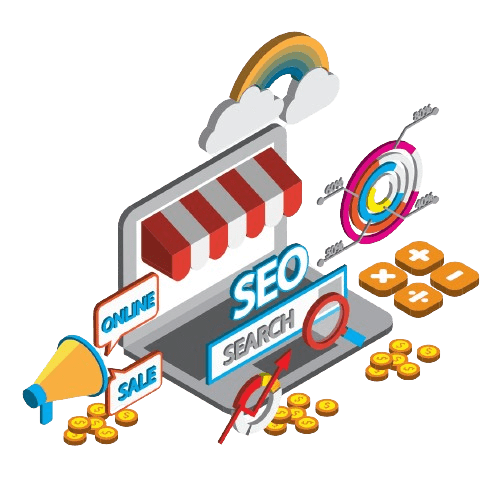
Why is SEO Essential for Ecommerce Success?
Unlike cold-calling or random social media ads, SEO attracts people who already have purchase intent. They’re typing relevant keywords into search engines like Google, and you want your online store to be the answer they click on.
Let’s say someone searches for “best running shoes for women,” you want your store to be at the top of the search results page, not buried on page ten. With effective SEO strategies, you increase your website’s visibility, attract the right kind of traffic (people genuinely interested in buying), and ultimately increase your ecommerce sales.
Keyword Research: Unlocking the Secrets of Search Traffic
So, how do you find those magic keywords that send targeted customers your way? Keyword research is the foundation of any successful SEO strategy. Keyword-rich URLs have 45% greater click-through rates than those without keywords.
Here’s a breakdown to get you started:
- Brainstorm relevant keywords.
- Free & paid keyword research tools.
- Focus on long-tail keywords. Long-tail keywords (more specific phrases) can be easier to rank for and often have higher conversion rates. For example, instead of targeting just “running shoes,” aim for “best waterproof running shoes for women with wide feet.”
On-Page Optimization Essentials: Fine-Tuning Your Website for Search Engines
Once you have a solid list of target keywords, it’s time to optimize your website’s content to make it search engine friendly. Here are some key on-page optimization elements:
- Integrate your target keywords naturally throughout your website content, including product descriptions, blog posts, and meta descriptions (the snippets displayed under search results). Don’t overdo it.
- Craft clear, concise, and keyword-rich meta descriptions and title tags that accurately represent your content and entice users to click.
- Search engines can’t “see” your images, so provide descriptive alt text that includes relevant keywords. This helps search engines understand your images and improves your ranking for image-based searches.
Building Backlinks the Right Way: Earning Trust and Authority
The more high-quality backlinks you have, the higher your website will rank in search results. But buying backlinks or participating in link schemes is a big SEO no-no!
So how to increase ecommerce sales and store visibility by building appropriate backlinks? Here are some ethical ways to build backlinks:
- Guest blogging (contribute informative and well-written guest posts to relevant blogs in your niche).
- Broken link building (find websites with broken links on pages relevant to your niche).
- Create shareable content (develop high-quality content like infographics, blog posts, or videos that people will want to share on their websites and social media).
Common SEO Mistakes to Avoid: Keeping Your Website Penalty-Free
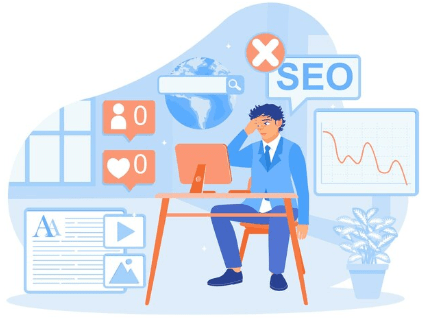
The world of SEO can be a tricky one, but by avoiding these common mistakes, you can keep your website on the right track:
- Keyword Stuffing: Don’t force keywords into your content in an unnatural way. Focus on creating high-quality, readable content that incorporates your keywords strategically.
- Neglecting Mobile Responsiveness: Mobile devices account for 38% of ecommerce sales in the US, with this trend expected to increase. With the majority of online searches happening on mobile devices, having a mobile-friendly website is crucial. Ensure your website loads quickly, displays correctly on all screen sizes, and offers a seamless user experience for mobile visitors.
- Ignoring Local SEO (for Brick-and-Mortar Stores): If you have a physical store location, leverage local SEO to attract customers in your area. Claim your Google My Business listing, optimize your website with local keywords, and build citations (online mentions) of your business with accurate address and contact information.
Beyond the Basics: Advanced SEO Strategies for Ecommerce Growth
While the above strategies lay a solid SEO foundation, here are some additional tactics to consider for advanced ecommerce growth:
- Technical SEO Audit: Conducting a technical SEO audit can help identify website issues that might be hindering your search engine ranking. This could involve checking for broken links, slow loading speeds, or mobile responsiveness problems.
- Structured Data Implementation: Structured data (also called schema markup) provides search engines with additional information about your products and website content. Implementing structured data can improve your search results snippets and potentially increase click-through rates.
- Content Marketing & SEO Synergy: High-quality, informative content that addresses your target audience’s needs is not only good for SEO but can also convert website visitors into paying customers. Create valuable blog posts, product guides, or infographics optimized with relevant keywords to attract organic traffic.
Pro Tip!
Search engine algorithms are constantly evolving, so staying updated on the latest trends and best practices is crucial for maintaining a strong SEO presence.
Stop Losing Ecommerce Sales to Clunky Mobile Experiences!
AppVerticals Creates High-Converting Ecommerce Apps that Delight Customers and Boost your Bottom Line.
Discuss your project with us!3. Content Marketing Marvel: Educate, Engage, and Convert
According to the Content Marketing Institute, 66% of top corporate survey respondents reported success in nurturing prospects through content marketing. Approximately 75% of them got success creating consumer loyalty with content marketing. 56% stated it helped them grow sales and earnings.
Now, with so much content bombarding internet users every day, how do you create content that cuts through the noise and increase ecommerce sales? Let’s unlock the secrets of content marketing magic!
What Kind of Content Converts Best in Ecommerce?
Ecommerce content comes in many forms, each playing a crucial role in the customer journey.
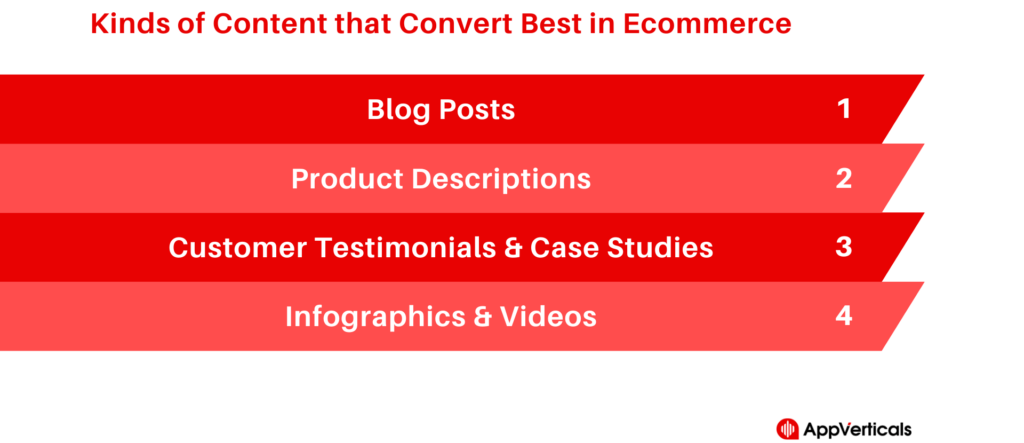
Here are some content powerhouses to consider:
- Blog Posts: Think buying guides, product reviews, “how-to” articles, or trend reports. Blog posts are fantastic for attracting organic traffic through SEO (search engine optimization) and showcasing your expertise.
- Product Descriptions: Craft compelling product descriptions that highlight benefits, address customer pain points, and use storytelling techniques to make your products come alive. High-quality product descriptions can significantly improve your conversion rate.
- Customer Testimonials & Case Studies: Social proof is powerful! Including positive customer testimonials and case studies on your website builds trust and convinces potential buyers that your products deliver real results.
- Infographics & Videos: Visual content is a winner! According to a survey, 89% of consumers were convinced to buy a product after watching a video. Create engaging infographics or short explainer videos to break down complex information and capture attention quickly. These are perfect for social media sharing and can significantly boost website traffic and increase sales.
Crafting Content that Captures Attention: Hook ‘Em From the Headline
What makes you click on a particular link while scrolling through search results? It all starts with a captivating headline.
Here are some tips for crafting headlines that grab attention and entice readers to dive deeper:
- Ask Intriguing Questions: Headlines like “Is [Product Category] Right for You?” or “The Ultimate Guide to [Problem Your Product Solves]” spark curiosity and encourage clicks.
- Promise a Benefit: Focus on your content’s value proposition. For example, “5 Ways to [Benefit of Using Your Product]” or “Increase Sales with These Ecommerce Content Tips” highlight the positive outcomes readers can expect.
- Use Numbers & Lists: People love numbered lists and bite-sized content. Headlines like “7 Hacks to Increase Your Conversion Rate” or “3 Must-Have Features for [Product Category]” are clear, concise, and enticing.
Pro Tip!
Beyond headlines, storytelling is your secret weapon. Weave narratives into your content to connect with readers on an emotional level. Share customer success stories, address common frustrations, and offer solutions that resonate with your target audience.
Worried about the quality?
Showcase glowing customer testimonials. Address their concerns and provide valuable information. This will build trust and increase the likelihood of converting them from website visitors to loyal customers.
Content Optimization for Search Engines and User Experience: Finding the Sweet Spot
Here’s the key: creating content that’s both informative for readers and optimized for search engines.
- Target Relevant Keywords: Sprinkle relevant keywords throughout your content naturally, but avoid keyword stuffing.
- Optimize Descriptions & Titles: Craft clear and concise meta descriptions (the snippets displayed under search results) and title tags that accurately represent your content and entice users to click.
- Prioritize User Experience: Don’t forget about your readers! Content should be well-written, grammatically correct, and easy to understand. Use short paragraphs, bullet points, and visuals to break up text and improve readability.
Content Distribution Strategies that Drive Traffic: Spreading Your Content Magic
Creating amazing content is just half the battle. You need to get it in front of the right eyes! Here are some strategies to distribute your content and drive traffic to your ecommerce store:
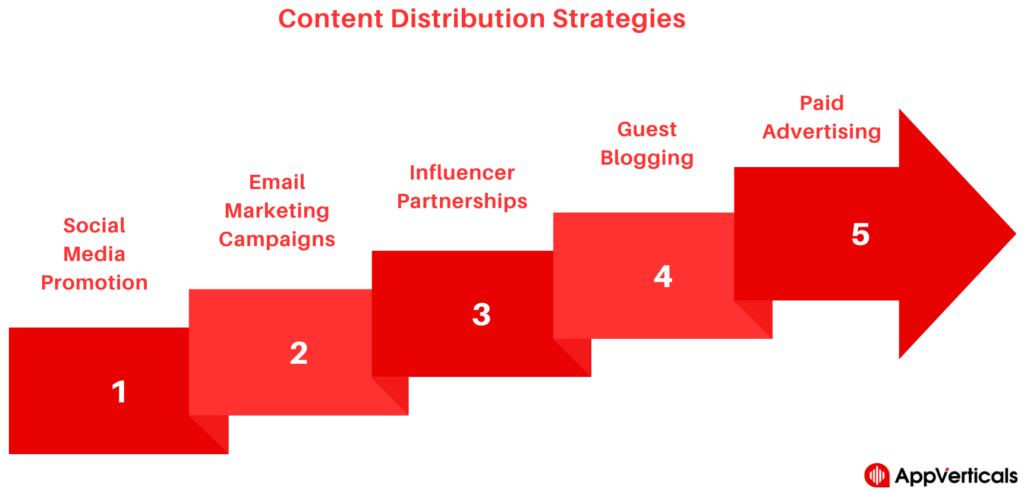
- Social Media Promotion: Share your content on relevant social media platforms. Utilize eye-catching visuals, compelling captions, and relevant hashtags to grab attention and encourage engagement.
- Email Marketing Campaigns: Build an email list and send engaging newsletters featuring your latest blog posts, product updates, or special offers.
- Influencer Partnerships: Collaborate with influencers in your niche to promote your products or content. Choose influencers whose audience aligns with your target market and leverage their reach to drive traffic to your store.
- Guest Blogging: Contribute guest posts to relevant blogs in your industry. This is a fantastic way to reach a new audience, establish yourself as an authority, and drive traffic by including a link back to your website.
- Paid Advertising: Google’s research shows that paid ads produce $2 for every $1 spent, a 200% return on investment (ROI). Consider running targeted social media ads or pay-per-click (PPC) advertising campaigns to promote your content or specific products to a wider audience.
Pro Tip!
Don’t be afraid to experiment and track your results. See what type of content resonates best with your audience and adapt your ecommerce sales strategy accordingly. The more you understand your target audience and their preferences, the more effective your content marketing efforts will be.
4. The Art of Engagement: Keeping Customers Hooked
The type of content, like Instagram reels, has 75% higher engagement and 41% more impressions than image posts. It can also result in 59% more interaction and 18% more impressions than carousels.
Social media is the ultimate hangout spot for billions of people. For ecommerce businesses, it’s a goldmine for building brand awareness, connecting directly with customers, and ultimately increase sales. But how do you turn casual scrollers into loyal fans? Let’s dive into the art of social media engagement for ecommerce success!
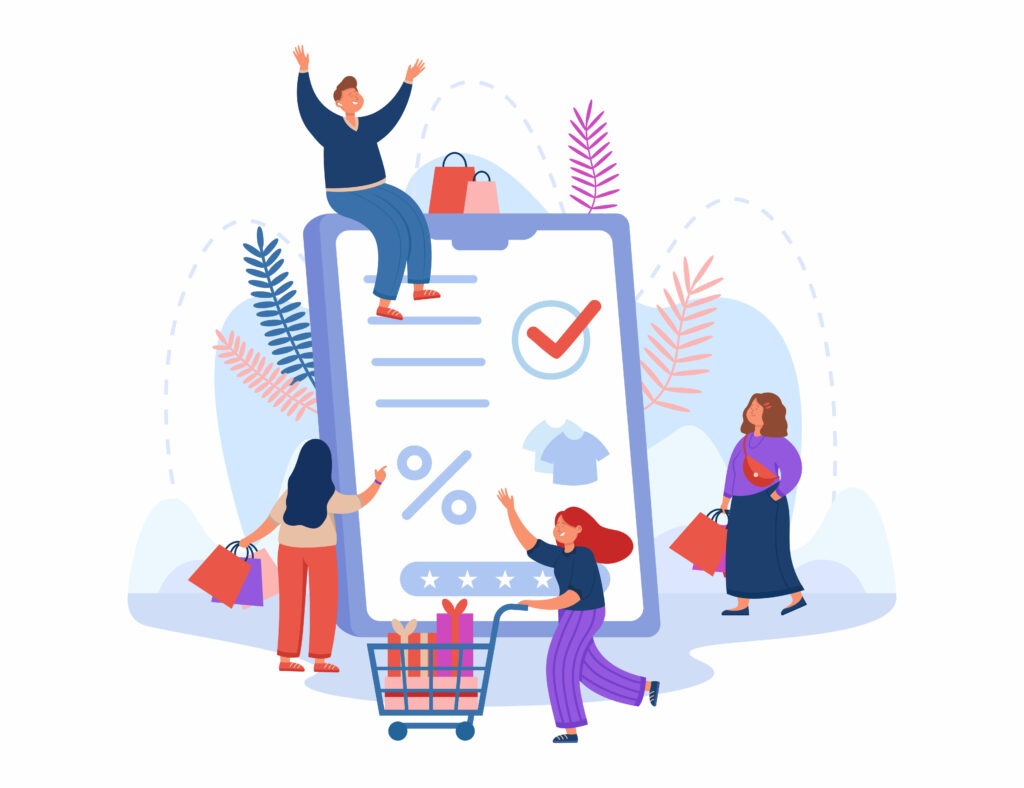
Why is Social Media Marketing Crucial for Ecommerce?
Here’s why you need to be there:
- Brand awareness powerhouse
- Direct customer connection
- Product promotion playground
Choosing the Right Social Media Platforms for Your Audience: Knowing Where Your People Hang Out
Not all social media platforms are created equal. The key is to identify where your target audience spends their time online. Here’s a quick rundown of some popular platforms:
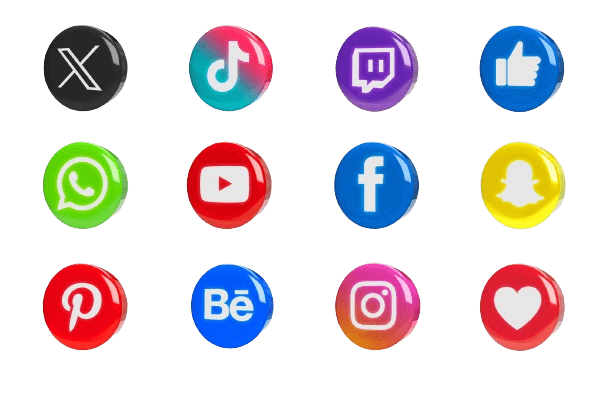
- Facebook: The social media giant boasts a massive user base, making it a great choice for reaching a broad audience.
- Instagram: Highly visual content thrives on Instagram. If your products are photogenic (think fashion, accessories, homeware), this is your platform.
- Twitter: Fast-paced and ideal for real-time engagement, Twitter is fantastic for customer service interactions, quick announcements, and sharing bite-sized content.
- TikTok & Reels: Short-form video content is taking the internet by storm. These platforms are perfect for showcasing product features, tutorials, or behind-the-scenes glimpses in a fun and engaging way.
Pro Tip!
You don’t have to be everywhere at once. Choose the platforms where your target audience is most active and focus on creating high-quality content tailored to each platform’s specific format and audience preferences.
Creating Engaging Social Media Content: Stop the Scroll and Spark Interest
Social media feeds are flooded with content, so how do you make yours stand out? Here are some tips for crafting content that grabs attention and keeps your audience hooked:
- Eye-catching visuals
- Interactive elements (Polls, quizzes, contests, and Q&A sessions).
- User-Generated Content (UGC)
- Social Listening (Use social listening tools to track brand mentions and identify trending topics).
Pro Tip!
Don’t just sell, connect! Share relatable content, behind-the-scenes glimpses, or humorous anecdotes to build a connection with your audience. Social media is about building relationships, not just pushing products.
The Power of Social Media Advertising: Reaching the Right People at the Right Time
Organic reach on social media platforms is declining, but fear not! Social media advertising allows you to target your ideal customers with laser precision. Here’s how it works:
- Demographic Targeting: Target your ads to specific demographics like age, location, interests, and even income levels. This ensures that your ads are seen by people most likely to be interested in your products.
- Interest-Based Targeting: Target people who have shown interest in similar products or brands. This allows you to reach a highly targeted audience who are already primed for purchase.
- Retargeting Campaigns: Retargeting campaigns can be a powerful tool for reminding potential customers about your offerings and driving conversions.
Pro Tip!
A small investment in social media advertising can go a long way in reaching a wider audience and boosting your sales. However, make sure your ad creatives are visually appealing, and your offer is clear and enticing.
5. Email Marketing Mastery: Nurture Leads and Increase Sales
Email marketing is a powerful tool for nurturing leads, building customer relationships, and increasing sales. Here’s how to unlock its potential:
Building an Email List with Permission: Growing Your Audience
The foundation of successful email marketing is a strong email list. Here’s how to ethically grow your list:
- Opt-in Forms: Place strategic opt-in forms on your website, offering valuable content like discounts, ebooks, or early access to new products in exchange for email addresses.
- Lead Magnets: Create downloadable resources like white papers, cheat sheets, or buyer’s guides that entice users to sign up for your email list.
- Valuable Content Offers: Send informative and engaging newsletters regularly featuring blog posts, product updates, or special offers.
Pro Tip!
Don’t spam! Always obtain permission before adding someone to your email list, and provide clear unsubscribe options in every email you send.
Crafting Compelling Email Campaigns: Speak Directly to Your Audience
Not all emails are created equal. Here’s how to write emails that resonate with your audience and drive results:
- Segmenting Your Email List: Divide your email list into different segments based on demographics, interests, or purchase history.
- Personalization Strategies: Use subscriber names, purchase history, or browsing behavior to personalize your emails.
- Email Automation for Abandoned Carts: Set up automated email sequences to retarget website visitors who abandoned their carts.
Pro Tip!
Keep your emails concise, visually appealing, and mobile-friendly. Focus on providing value and making it easy for subscribers to convert, whether it’s visiting your website, learning more about a product, or making a purchase. For the finest ecommerce app, consult with the app development company in Dallas.
Email Marketing Best Practices for High Open Rates and Click-Through Rates: Subject Line Magic
The battle for inbox space is fierce. Here’s how to craft emails that people actually want to open and click:
- Subject Line Optimization: Your subject line is the first impression, so make it count. Use strong verbs, keep it concise, and create a sense of curiosity or urgency. A/B test different subject lines to see what resonates best with your audience.
- A/B Testing Different Email Elements: Test different aspects of your emails, like call-to-action buttons, email layouts, or sending times, to see what gets the most engagement and conversions.
Pro Tip!
The key is to provide value, connect with your audience on a human level, and make the shopping experience on your website enjoyable and convenient. So, go forth, engage your audience, and watch your ecommerce sales soar!
Wrapping Up!
There you have it! We’ve explored a treasure trove of tips and strategies to ease you understand how to increase ecommerce sales. Remember, there’s no magic bullet – success comes from a multi-pronged approach.
Now it’s your turn to take action! Implement the tips discussed in this blog post and watch your ecommerce sales climb. Feeling overwhelmed? Start small! Focus on one or two strategies at a time and gradually build your marketing muscle.
At last, don’t be afraid to experiment. Embrace challenges as opportunities to learn and, most importantly, have fun on your ecommerce journey!
Remember, success is within your grasp!
Need Help In Developing An Ecommerce App And More? Contact AppVerticals, Your One-On-One Ecommerce App Development Company!

